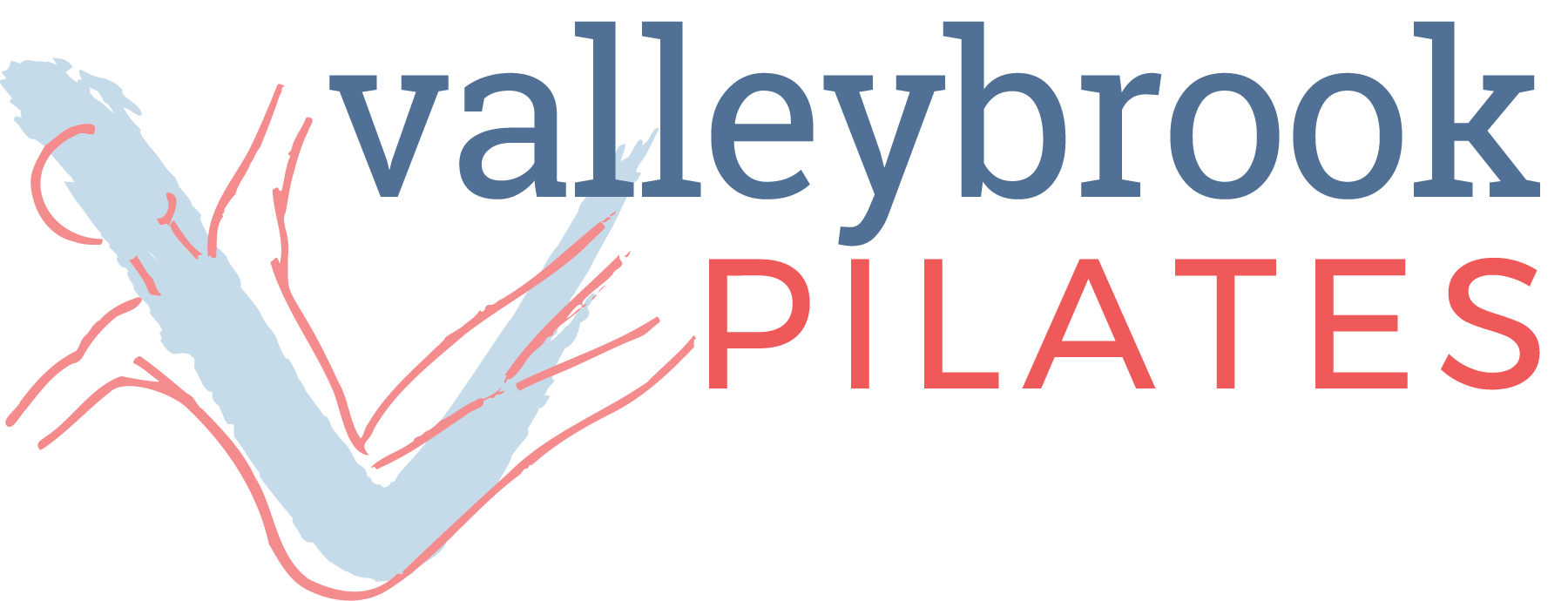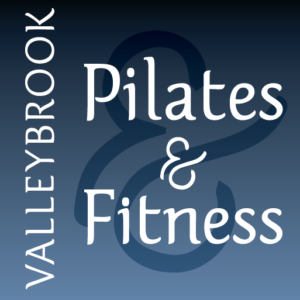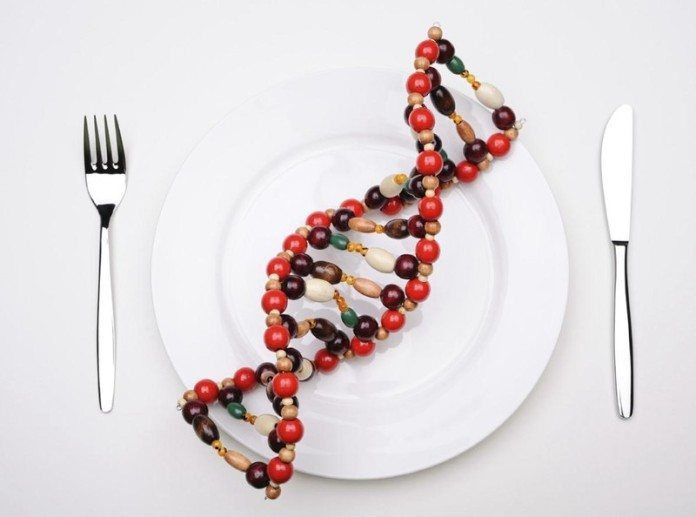
by Colleen Dachille | Feb 19, 2018 | Nutrition
It seems as though a new diet hits the market every other week. Needless to say, wading through the endless sea of high-protein, low-carb, and everything in between can be exhausting. But the reason we have all these endless options is due to our genetic and environmental individuality, thus, different diets work for different people. Consequently, finding an ideal diet and exercise routine usually involves a lot of trial and error.
Aspirations of weight loss continue to pervade Americans New Year’s resolutions year after year. 68 percent of Americans are overweight or obese as of 2010, according to the Centers for Disease Control and Prevention. Gaining weight is the result of chronic positive energy balance involving two primary factors — eating more calories (input) than your body can burn off (expenditure). However, this simple equation of “energy in versus energy out” is not as streamlined as healthcare professionals once thought. There are many other factors that affect metabolism and hormone balance which contribute to the overweight and obesity epidemic. One novel area that researchers have investigated is genetic makeup. As a result, several companies have begun providing genetic tests designed to increase weight-loss success.
While genetic testing is no one-stop solution for gaining or losing weight, research into the genetic testing to personalize diet and fitness programs for weight loss can be advantageous. In a study conducted by Stanford University researchers, participants who were on genotype-appropriate diets shed 5.3 percent of their body weight. However, those who were on diets not matched to their genotype lost only 2.3 percent of their body weight.
According to this research, the results of the test were even more striking when taking into account the popular diets participants were following, which were the low-carbohydrate Atkins diet and the low-fat Ornish diet. Participants whose genotypes matched the diet lost 6.8 percent body weight; while those whose genotypes did not match the diet lost only 1.4 percent. Genetic testing can reveal whether a high protein or low-fat diet is more beneficial for you in losing weight.
Despite these promising results, DNA based nutritional counseling is a complex process. Simply submitting your saliva to a lab for analysis is the easy part. Figuring out what to do with your results can be a lot trickier. It’s important to have guidance and support from a qualified healthcare professional, such as a Registered Dietitian Nutritionist to help you understand and establish the most appropriate plan of action for weight loss. Knowing which type of diet will be most effective can be the difference in spinning the diet wheel through trial and error, or doing what is exactly what your body needs to achieve your goals.

by Colleen Dachille | Nov 13, 2017 | Pilates
Pilates: The Fountain of Youth?
At Valleybrook Pilates and Fitness, we know everyone can benefit from adding Pilates to their routine. With older adults, we can help seniors lead a longer, stronger life with the practice of Pilates.
The United States is aging, with 15.2% of Americans age 65 or older.[1] It is predicted that by 2030, 1 in 5 adults will be in this category.[2] While the benefits of exercise are numerous for every age group, for seniors who desire to maintain physical and mental wellness, preserve function and stay active, exercise is essential. Actually, there are only a few untreatable or serious medical conditions that might stop an older adult from participating in moderate to vigorous exercise.[3]
As the number of older adults in our population steadily increases, the need for greater knowledge regarding the effects of aging on the components of fitness combined with the understanding of the role exercise plays in staving off the negative effects of aging becomes more important than ever. In our studio, Pilates instructors look beyond muscle strength, endurance and flexibility to create a program that includes motor coordination and balance as they contribute to functional performance. We also factor in individual needs as well as joint and other health concerns, along with mental and emotional well-being.

Studies show that lifestyle changes in diet, exercise, stress management, and social support may result in longer telomeres, the part of the chromosomes that affect aging. Exercise recommendations are for moderate, daily exercise.[4] More and more studies are coming out that support these recommendations and underline the fact that our seniors are struggling with stress issues. Pilates can be a powerful tool in the active aging arsenal helping them to improved wellness. Just as with all other clients, individuals in the over-65 age group can range from the sedentary with chronic health issues to competitive athletes with strong training programs in place.
During a private Pilates lessons, we teach to each individual that is most appropriate for them on that given day. Every day is different and for older clients, those differences can be more pronounced. We often change the lesson plan on the fly, to offer more building blocks, props, supportive touch, or to slow the pace down after travel or just a low-energy day. Alternatively, we are ready to up the game plan when a client seems to have more energy and focus. Practiced on a regular basis, Pilates truly can be the fountain of youth.
Read more on this topic
(1) U.S. Census Bureau (2016). Income, Poverty and Health Insurance Coverage in the United States: 2016. Retrieved from: https://www.census.gov/newsroom/press-releases/2017/income-povery.html
(2) Administration on Aging (2011). A Profile of Older Americans: 2011. Retrieved from: http://www.aarp.org/content/dam/aarp/livable-communities/learn/demographics/a-profile-of-older-americans-2011-aarp.pdf
(3) Panton, Lynn B. PhD, FACSM, Loney, Brittany, MS, MA (2012). Exercise for Older Adults: Health Provider Edition. Retrieved from: http://file.lacounty.gov/SDSInter/dmh/216745_ExerciseforOlderAdultsHealthCareProviderManual.pdf
(4) Ornish, D (2013). “Effect of comprehensive lifestyle changes on telomerase activity and telomere length in men with biopsy-proven low-risk prostate cancer: 5-year follow-up of a descriptive pilot study”. DOI: http://dx.doi.org/10.1016/S1470-2045(13)70366-8
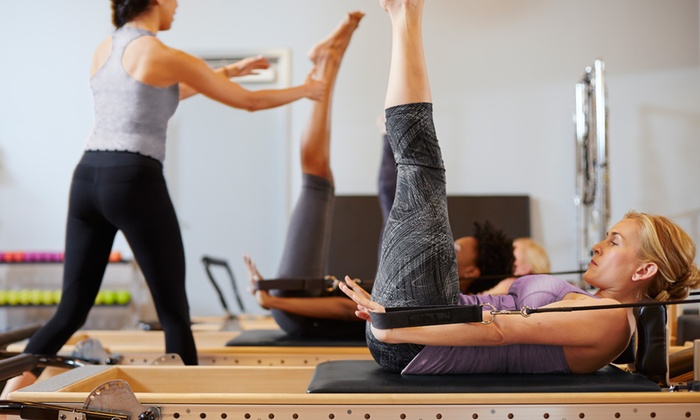
by valleybrook | Aug 22, 2017 | Pilates
Mat classes are often the first experience most people have with Pilates. Recreation centers, health clubs, and community gyms may offer mat classes to its members. Mat exercises can be difficult for beginners to do, however, because they do not have the core strength to perform the exercises correctly. This combined with an instructor that may have minimal training and a room full of students, can lead to injuries at worst, or ineffectiveness at best. Consequently, some people come away with the notion that Pilates causes neck pain, or aggravates back issues. This is a valid concern in the Pilates industry. A qualified instructor needs to watch and teach by cueing and observing, not by performing and demonstrating to the class in the front of the room. The watchful eye of a certified, educated, and experienced teacher that can spot poor technique is the best insurance against injurious Pilates training.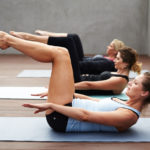
The truth of the Classical Pilates Method is based on a full, integrated system of equipment—and mat exercises are just part of the technique (only 25 percent of the Pilates exercise system/repertoire can be performed on a mat). By adding equipment, or starting out on the equipment, you are able to experience a more authentic, quality experience. The equipment can aid in changing your body faster and more safely because the springs provide support and resistance that help you to engage your core connection in a way that is difficult to do on the Mat alone, especially for beginners. The equipment allows you to shape, tone, lengthen and align quite different than working on the mat alone. But it is important to do both, and there’s nothing quite like a challenging mat class; and the more experience you have in Pilates, the harder the mat classes can be.
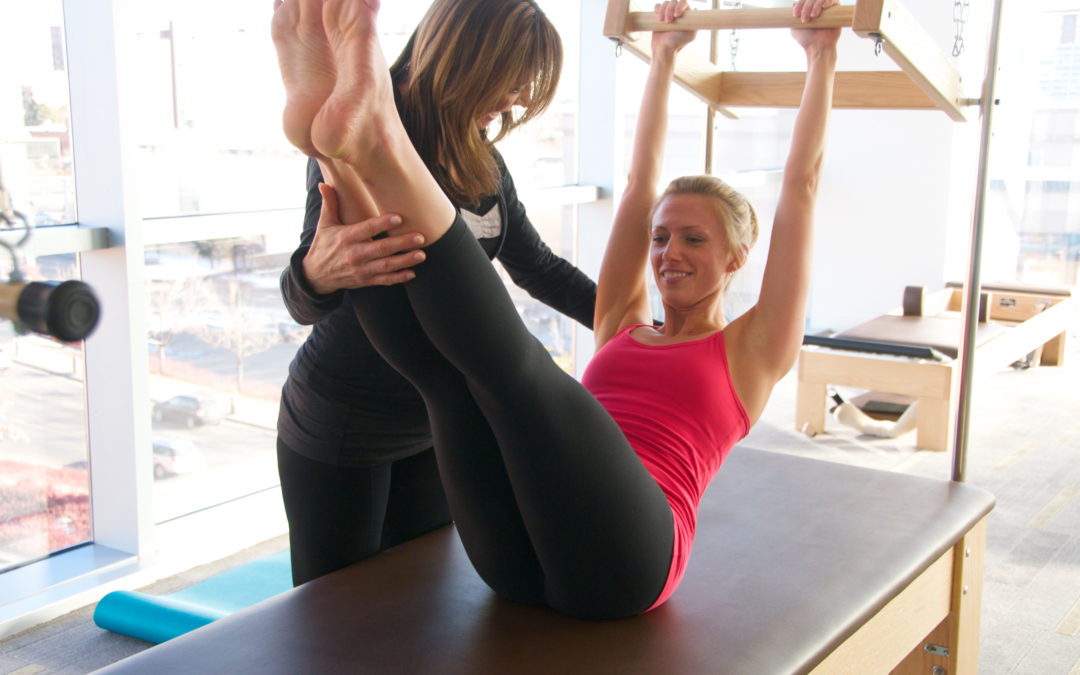
by valleybrook | Aug 22, 2017 | Pilates
SAY WHAT???
Pilates instructors use verbal cues to help students execute movements correctly, but some may be a little confusing at first. Here are explanations for some of our lingo!
|
When you hear:
|
Try doing this:
|
|
|
- Maintain the lower spine’s natural curvature by keeping your two front hip bones level with your pubic bone. Don’t flatten out or over-arch the curve in the lower back by tilting the pelvis.
|
|
|
- Hollowing out your abdominals using your exhale and your deep abdominal muscles. It is a feeling of pulling your abs “in” and then “up” under your rib cage. This does not mean flattening your low back or “tucking your pelvis”.
|
|
|
- A term coined by Joseph Pilates himself. The abdominals, back, hip and shoulder girdle muscles all working together. These are the main stabilizing muscles and are very important for preventing injury to the spine. As Joe said, “the engine that drives the movement”.
|
|
|
- “Breathing is the first act of life, and the last… above all, learn how to breathe correctly.” Joseph Pilates. In Pilates, we use diaphragmatic breathing as the rib cage expands laterally (side to side) and towards the back of the ribcage. Breathing patterns are the focus of many exercises, but of course, it is utilized in all.
|
|
|
- The sitz bones are the two bones that you “sit on” and are located at the bottom of your pelvis. If you sit on a hard chair you’ll likely feel them poking down. Aiming your sitz bones towards your heels when lying down encourages a neutral spine.
|
|
|
- Stretch the muscles of your legs without tensing or overly pointing your feet. Keep your hips even. Imagine someone gently pulling your legs by the ankles.
|
- Pilates Stance vs. Parallel Stance
|
- Pilates stance is the formation of a small “V” with your feet by placing your heels together and your toes a “fist distance” apart. Contrastly, a parallel stance is keeping your feet in parallel alignment with equal weight distribution on all four sides of each foot.
|
|
|
- As you lengthen the back of your neck, slightly tilt the chin down. The chin shouldn’t actually touch your chest; keep the width of an apple or tennis ball between the two.
|
- Relax Your Shoulders/Slide Your Shoulders Down Your Back
|
- One of the most commonly heard cues! Overusing the upper body muscles and shoulder tension is common in many people. Pilates teaches correct shoulder stabilization and alignment preventing many shoulder injuries. Avoid letting your shoulders lift to your ears, draw them down and back.
|
|
|
- Roll forward or backward through the spine one vertebra at a time. Feel as though you are imprinting each bone into the mat as you roll up or down.
|
|
|
- Use the deep abdominal muscles to stabilize your body before you move, and to initiate the movement. The “scoop” explained above is utilized here.
|
|
|
- Squeeze the inner thighs and sitz bones toward each other, actively pressing your legs together.
|
|
|
- Lie on your back and raise your legs to a 90-degree angle from your body. Then bend your knees so your calves are at a 90-degree angle to your thighs.
|
|
- Lengthen on each side of your waist
|
- Creating a C-shape with your back by looking into your abs and tilting your pelvis anteriorly. All the while not letting your ribs collapse. (see below)
- Even though your spine is in a curve, do not let your ribs collapse onto your waist. Keep length and space from your bottom ribs to the top of your hips. To avoid collapsing into your ribs, pretend you’re curving over a porcupine.
|
|
|
- When you sit on the floor, try to lengthen your spine upward. At the same time, push your legs into the floor, and reach through your heels. Or as you reach up, draw your shoulder blades down your back. The effort of lengthening in both directions builds stabilization and makes each movement a whole-body exercise.
|
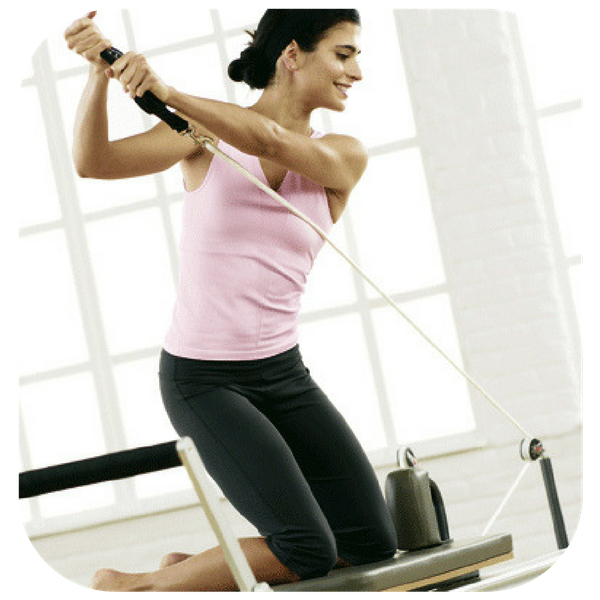
by valleybrook | Jun 27, 2017 | Pilates
“If you have a body, you are an athlete.”
– Bill Bowerman, renowned U.S. track and field coach
Schools out and summer activities are taking over our schedules, but that should not stop us from pushing our bodies to reach our fitness goals. However, when it comes to our workout routines, it can be difficult to judge what is helping to strengthen our bodies, vs. what is putting us at risk for sports and movement related injuries. This is where Pilates factors in. It can help us develop well balanced and flexible bodies that not only perform better on the court, course or field, but also keep us doing what we love longer and without getting sidelined from injury.
Injury Prevention
We hear the words “injury prevention” thrown around often. Typically associated with stretching, this term has a loose definition that can mean various things to any given individual depending on the types of physical activity they choose to perform. Pilates is much more than simple stretching; it is a fitness category in its own right that has a significant impact on injury prevention.
Here are some valuable insights into Pilates you should know if you are serious about staying injury free:
Core Focus
Our bodies are designed to operate as a single unit that flows through our core muscles. Pilates does not just recognize this concept – its foundation is built upon it. The fact is that the majority of your functional strength is capped by the strength of the muscles that comprise your core, or “Powerhouse”. A high-volume of injuries each year result from not properly engaging your core while exercising which can lead to stress fractures, muscle tears, and general strains and pulls among others. With Pilates, the goal of every exercise is to build core strength through the use of proper form and exercise methodology.
Controlled and Balanced Movements
With Pilates, you are the master of your body. Pilates is not about performing a million repetitions, maxing out while weightlifting or beating personal bests on the field, rather it stresses coordinating movements and achieving alignment of the body. Pushing yourself may look different from what you are used to in your gym routines, but this practice requires mental focus over physical momentum, forcing the body and the mind to work together to perform exercises with precision and an eye toward technique. Control is massively important in preventing injury. Understanding your body’s natural limitations and finding ways to control them is the best way to prevent getting hurt in the long run.
Whether you practice Pilates as an aid to another sport or it’s your workout of choice, the benefits are ample. Yes, maybe we are not all meant to win a gold medal or beat a world record, but even if our personal best is walking around the block, no athlete should have to deal with unnecessary injuries when there are modern ways to help prevent them. Fitness is about feeling good, and Pilates can help you maintain that feeling in all aspects of your daily life.


